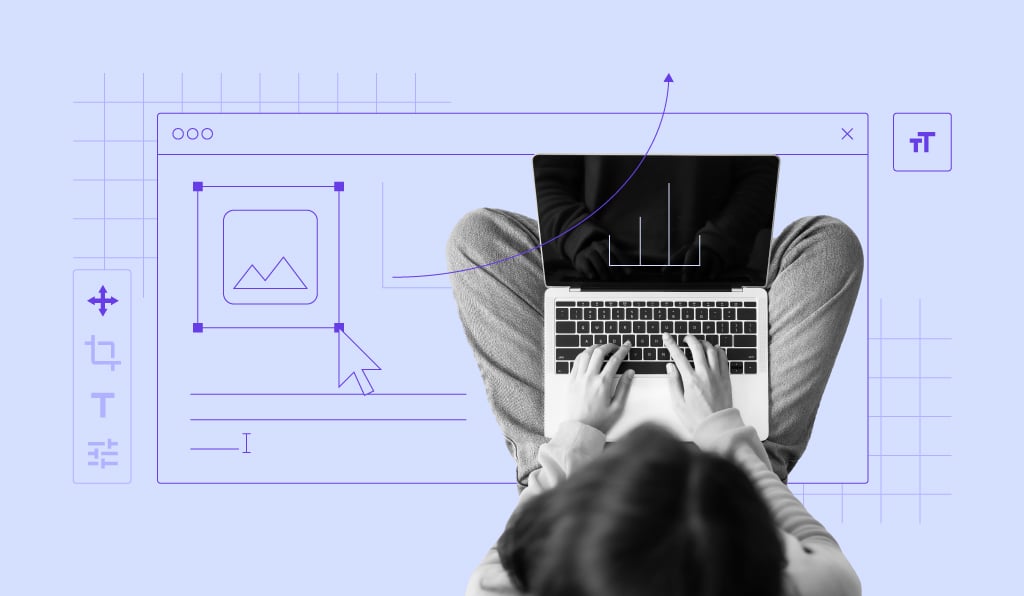Increase Involvement With Cutting-edge Web Site Layout Solutions
A thoughtfully crafted customer experience, underpinned by calculated aesthetic style and interactive components, can significantly boost customer involvement. By exploring numerous methods such as receptive style and tailored content, companies can create a system that not only astounds users yet additionally cultivates long-lasting loyalty.

Understanding Customer Experience
Recognizing user experience (UX) is critical for producing efficient internet site design remedies, as it straight influences how customers communicate with electronic platforms. A detailed UX strategy encompasses various elements, consisting of functionality, ease of access, and user fulfillment, every one of which add to the general effectiveness of an internet site.
To start with, functionality concentrates on how easily users can browse and discover the information they seek - website design. A well-structured design, intuitive navigating, and clear phone calls to activity are fundamental elements that improve use. Ease of access makes sure that all individuals, consisting of those with disabilities, can successfully communicate with the web site. This includes creating web content that is compliant with access standards and can be easily accessed making use of assistive technologies.
In addition, comprehending customer personas is important for tailoring the experience to fulfill specific target market demands. By performing individual study and screening, designers can gather insights that inform layout choices, guaranteeing the site not only fulfills visual goals but likewise satisfies useful needs. Inevitably, a thoughtful technique to UX layout promotes involvement, motivates retention, and enhances total individual contentment, which are essential for the success of any electronic platform.
Visual Layout Techniques
Incorporating efficient visual layout methods is necessary for capturing user attention and enhancing the overall user experience on a website. A well-balanced aesthetic pecking order overviews users with the web content, enabling them to conveniently take in and browse info. This can be achieved with the strategic use typography, shade systems, and spacing, which jointly create a natural and engaging format.
Color plays a crucial role in developing and evoking emotions brand identification. Using a well balanced shade palette that straightens with the brand's principles can foster knowledge and depend on. In addition, integrating top quality images and graphics enhances aesthetic appeal and can dramatically improve user engagement.
Whitespace, frequently overlooked, is just as crucial as it permits web content to take a breath and stops frustrating individuals with mess. It facilitates much easier analysis and comprehension, bring about an extra delightful browsing experience.
Finally, uniformity in layout components-- such as switch styles, font styles, and icons-- ensures a seamless user trip, enhancing the brand's expertise. By tactically executing these aesthetic design strategies, internet sites can not only attract visitors yet likewise encourage them to remain longer and involve more deeply with the material.
Interactive Elements for Involvement
Involving customers properly frequently depends upon the application of interactive elements that welcome involvement and promote a dynamic searching experience. These elements, consisting of tests, polls, and interactive infographics, urge individuals to actively participate instead of passively take in material. By integrating such functions, websites can not just capture attention however additionally enhance user retention.

Gamification is an additional effective strategy. Including game-like elements, such as achievements or rewards for finishing tasks, can transform ordinary interactions right into satisfying experiences. This method not just improves engagement yet also urges customers to return, producing a loyal target market.
In addition, interactive components can facilitate social sharing, intensifying a website's reach. Attributes like remark sections, share buttons, and user-generated web content areas foster area interaction, turning site visitors into energetic individuals. website design. Ultimately, the critical use interactive elements is crucial for creating a appealing and compelling web site that reverberates with users
Adaptive and responsive Style
A properly designed website needs to prioritize receptive and flexible design to make sure optimum user experiences across a selection of tools and display dimensions. Responsive layout employs liquid grids and click resources flexible images, allowing the layout to instantly readjust based on the viewer's screen dimension. This strategy ensures that customers can conveniently engage and browse with the content, no matter whether they are utilizing a tablet computer, desktop computer, or smart device .
In contrast, adaptive design uses predefined designs that are tailored to specific tool groups. This suggests that the internet site discovers the type of tool being made use of and offers the proper design, which can improve packing times and optimize the screen resource of necessary components. While both strategies aim to improve functionality, receptive layout is commonly preferred for its fluidness and smooth transition in between devices.
Including adaptive and responsive design not just boosts customer satisfaction but additionally positively influences online search engine rankings. Internet search engine prioritize mobile-friendly sites, therefore raising exposure and bring in more visitors. Spending in these style strategies is crucial for organizations looking to engage their target market properly and maintain a competitive edge in today's electronic landscape. website design.
Analyzing Customer Comments and Information
Individual feedback and data analysis are essential elements of effective internet site style, as they provide valuable insights right into individual actions and choices. By methodically collecting and taking a look at individual feedback via surveys, use testing, and analytics tools, developers can identify pain factors and locations for improvement. This data-driven method allows organizations to adjust their internet site components, ensuring that the individual experience lines up with audience expectations.
Analyzing metrics such as bounce rates, time on web page, and click-through prices provides a quantitative point of view on individual interaction. These metrics assist designers determine which material resonates and which locations might call for optimization. Furthermore, A/B testing can be used to examine variants in layout, allowing designers to make enlightened choices based on individual communications.
Incorporating user feedback not just improves website use however likewise promotes a sense of community and count on. Involving with customers with feedback loopholes cultivates commitment and encourages repeat gos to. Inevitably, leveraging individual comments and information evaluation is important to creating a dynamic, user-centered website that adapts to evolving individual demands and choices, thus driving higher interaction and fulfillment.
Verdict

A thoughtfully crafted customer experience, underpinned by tactical visual layout and interactive components, can substantially enhance customer interaction.Incorporating reliable visual style approaches is crucial for recording user attention and improving the overall individual experience on a web site.User responses and information evaluation are necessary components of efficient internet site layout, as they give important understandings into user behavior and preferences. Eventually, leveraging customer feedback and data analysis is important to creating a dynamic, user-centered web site that adapts to advancing user requirements and preferences, thus driving higher engagement and contentment.
In conclusion, ingenious internet site design services significantly improve customer engagement by prioritizing user experience, employing effective visual methods, and you can try these out integrating interactive components.
Comments on “How Website Design Affects Your Website’s Loading Speed and Performance”